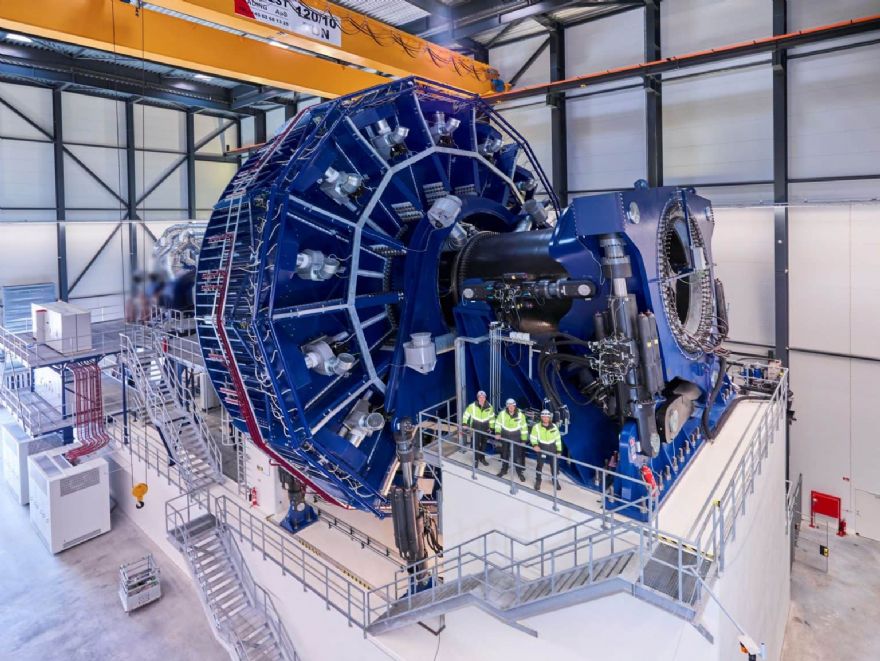
The Danish engineering specialist
R&D Test Systems has designed and delivered the world’s largest and most powerful ‘highly accelerated lifetime testing’ (HALT) test bench for wind turbine nacelles at the Danish test centre Lindø Offshore Renewables Centre (LORC), which is focused on test and validation.
A response to the growing demand for power from renewable energy sources, the new test rig can accommodate the next generation of larger wind turbines and prove they are capable of operating reliably in extreme offshore conditions.
The new ‘HALT XL’ test bench is the largest and most powerful on the market. Mounted on a 30m-long concrete base, it features a 25MW drive motor that is 15m in diameter. The system can deliver a tilt moment of 85 million Nm, sufficient to allow the test bench to simulate the harshest of wind conditions (exposing prototype wind turbines to pre-defined HALT tests allows manufacturers to make accurate assessments of reliability and can significantly shorten time to market).
Sascha Heinecke, R&D Test Systems’ sales director, said: “We needed to design a test bench that could expose wind turbine prototypes to the equivalent of 20 years of weather conditions in just six to eight months.”
Torben Lorentzen, LORC’s CEO, said: “Fundamentally, our job is to stress the prototypes as much as possible. The HALT XL can simulate a dynamic bending moment of 85MNm. That is equivalent to the pulling power of 67 family cars dangling from the end of a turbine blade 100m long.”
Mr Heinecke added: “The field testing of wind turbines, especially those for offshore use, is becoming more difficult, but HALT testing allows manufacturers to ensure their prototypes conform to applicable standards. It also provides them with a crucial insight into how their new technology will react to the conditions they will encounter out at sea.
“With HALT XL, prototypes can be exposed to all the stresses and strains they could reasonably be expected to endure during a 20-year lifetime in just 3% of that time. During the process, any weaknesses and failure mechanisms can be determined.”